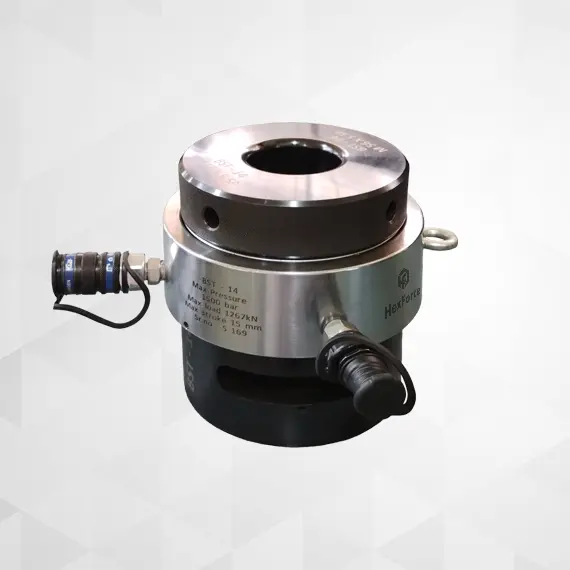If you are looking for a hydraulic bolt tensioner rental, you have come to the right place. Many bolting Services specialize in renting high-quality, Bolt-Tight bolt tensioning equipment that meets high safety standards. Bolt-tight hydraulic bolt tensioners and tightening tools are the industry standard for handling most bolting applications. These tools feature state-of-the-art design technology and composite seals, making them efficient and safe to use and able to withstand high residual stresses on bolts.
What is Bolt Tensioning?
Bolt tensioning is the process of applying a load to some or all of the bolts on a flange simultaneously using a hydraulic nut or removable bolt tensioner. It uses hydraulic pressure to apply an axial load directly to the stud rather than rotating the nut to apply the load. Tensioning can be performed on some or all of the studs simultaneously.
How Does Bolt Tensioning Work?
Bolt tensioning works by applying hydraulic pressure to stretch the stud axially. By manually turning the nut until it touches the flange again, the hydraulic pressure is then released on the tensioner to hold the nut at the applied tension. This method differs from bolt torque adjustment, which uses the nut’s rotational force through friction on the stud threads, causing the stud to extend.
The tensioning process applies an axial force directly to the stud without having to rotate the nut to adjust the tension, eliminating the need to guess the amount of friction required or applied.
Key Features and Benefits of Bolt Tensioners for Rent:
- A robust and durable design ensures durability and long service life.
- The lightweight design makes the tool easy to handle.
- Precise engineering ensures smooth and trouble-free operation.
- Composite seals allow easy piston recoil.
- CE marked for use under pressures over 1,000 bar.
Tensioning Terminology:
Applied Load:
The applied load is the load applied directly to the stud shaft, while hydraulic pressure is applied to the tensioner. It is used to the bolt during tensioning—before the load is transferred from the hydraulic system to the bolt and before operation. This load is known to be 99% accurate as it is calculated as Force = Pressure x Area.
Loss of Weight:
Loss of weight refers to the load lost during the transfer of the load from the hydraulic system to the nut. When the load on the stud is transferred from the hydraulically pressurized tensioner to the nut, a subsequent loss of weight occurs.
This loss of weight comes from the multiple points of contact that are relaxed and deform elastically as the nut bears the load instead of the tensioner. This loss of weight occurs only during assembly and is known for most applications. Therefore, it is compensated for when the applied load is determined and accepted.
Percentage of Pulling:
When tensioning a bolt, the applied force is usually used to 50% or 100% of the bolts on the flange at once, depending on the configuration and size of the flange. When 100% tensioning is used, the same force is applied to each bolt, resulting in less noise and increased force accuracy.
In hydraulic torque wrench rental, when tensioning at 50%, half the bolts are pulled at a time, requiring a higher force on the first pull than on the second pull, and may introduce some noise.





